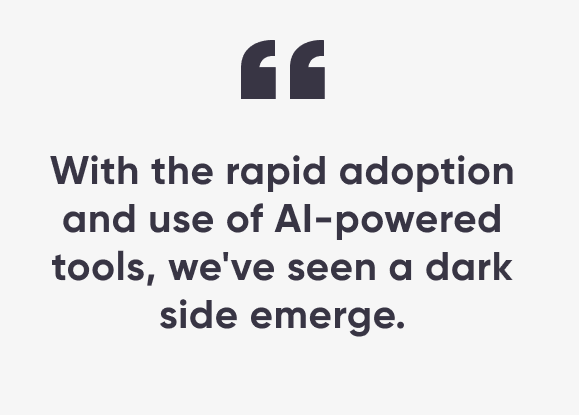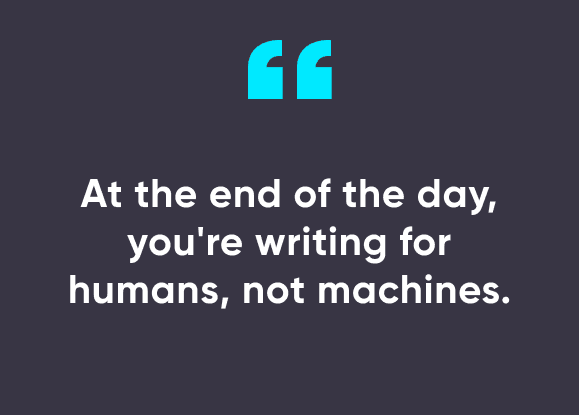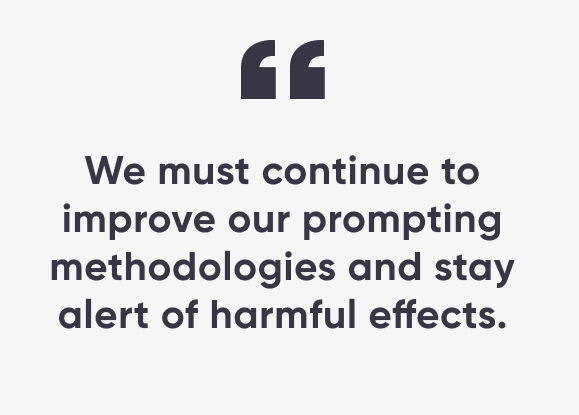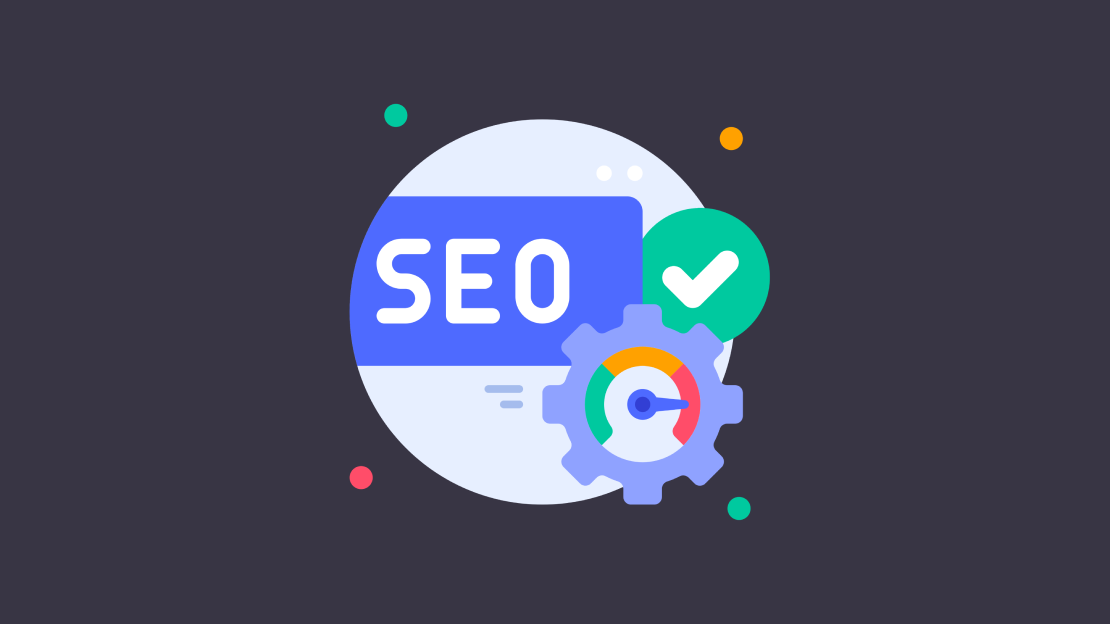ChatGPT SEO Capabilities: The Good and the Bad
For those of us that have been in the digital marketing industry for over a decade, it seems one of the few things that has stayed consistent about SEO is change. Changing Google algorithms, evolving user behavior, and technological innovations makes it challenging to keep up.
Let’s face it, keeping up on the latest SEO trends and tools is an overwhelming task.
The software solutions available to help us navigate the complex puzzle of content optimization are numerous. Yet, even as we’re drowning in options, the emergence of AI-powered tools like ChatGPT have shown extremely intriguing SEO capabilities in their infancy.
But with the rapid adoption and use of these tools, we’ve also seen a dark side emerge.

As content creators responsible for optimization strategies for numerous clients, we have to stay on the forefront of trends, solutions, and “black hat” tricks that can negatively impact digital efforts in the long-term. In recent months, we’ve experimented using ChatGPT for countless use cases across our content and have learned many lessons along the way (and some ready-to-go queries you can use!).
Using AI for SEO should be done cautiously. Relying on these tools with reckless abandon can have extremely detrimental effects on your content quality and rankings.
But before we dive into the goods, the bads, and the future of using AI for SEO, let’s take a step back to ensure foundational understanding.
What is SEO?
SEO stands for search engine optimization and refers to a set of processes designed to increase the visibility of a website’s content pages with the goal of increasing organic site traffic.
This is done through a set of strategies aimed at best matching content to the intent of the search engine user. SEO strategies can include keyword research, improving content quality, competitor analysis, and more technical tasks.
When talking about SEO, in most cases, the search engine in question is Google, though there are others to consider, like Bing and DuckDuckGo.
What is artificial intelligence?
Artificial intelligence (AI) is the process of using machines, like computer systems, to imitate human intelligence. Common applications of AI include speech recognition, natural language processing, machine vision, and more.
Oftentimes, AI is referring to one component of artificial intelligence: machine learning. This requires a foundation of specialized hardware and software to write machine learning algorithms and train machines on how to process information.
Focusing on natural language processing, ChatGPT is an example of a tool that uses artificial intelligence and machine learning to have conversations and generate content.
What is ChatGPT?
ChatGPT is a natural language processing tool that uses AI technology to initiate human-like conversations and perform other tasks. The language model has the ability to answer questions and create content for things like email subject lines, blog titles, development code, and more. This tool was released by OpenAI in November 2022.
OK, that’s my human answer. Let’s see what ChatGPT says.
TDIL what GPT stands for. 😉
ChatGPT SEO Capabilities
Just because you can do something, doesn't mean you should.
It’s true: ChatGPT can write complete articles (up to 3,000 words) given just one target keyword.
But should it?
What kind of content is that going to deliver? Will any human want to read it?
At the end of the day, you’re writing for humans, not machines. This should be your north star when using AI tools for SEO.

Write it on a post-it.
ChatGPT is not going to make copywriting absolute. However, there are some SEO-related tasks that can be performed safely using AI-powered tools to save time and mental energy.
How to Use ChatGPT for SEO
Another guiding mantra when using ChatGPT for SEO is to think of the tool more like a research tool than a writing assistant. Though it does have helpful capabilities of creating defined lengths of copy, like meta descriptions. The best ways to use ChatGPT for SEO include:
- Topic research including competitor and link building research
- Writing 40-50 word “How to” or “what is” definitions to target Google Snippets
- Finding relevant questions and answers for FAQ sections
- Suggesting title tags titles and writing meta descriptions based on target keywords
- Coming up with punchy, click-worthy titles
- Suggesting blog outlines based on target keywords
Google Featured Snippets
Even if you don’t recognize the term “featured snippet,” chances are you’ve encountered them in your own Google search results. These are meant to provide answers at a glance to specific search queries often phrased as a question or in a similar manner.
The best part? Featured snippets rank ahead of the first organic search result on the page, as you can see above. This can be a great way to quickly outrank content that has more historical authority.
How can ChatGPT help get your content included as a featured snippet in Google?
The optimal length of a featured snippet paragraph is 40-50 words or around 300 characters. ChatGPT can be used to generate a defined length of copy, which can be great for generating content to target featured snippets.
Try using an answer prompt and the defined character length in ChatGPT. Something like “Create a 300 character summary response to the question “USE YOUR MAIN TARGET KEYWORD IN A QUESTION”
While the above certainly isn’t bad, it can be improved for human readability by eliminating unused words and creating a better sentence flow.
FAQ Sections
FAQs (frequently used questions) can have positive SEO impacts on your website in a number of ways, both having a general FAQ page on your site and having FAQ sections on individual web pages and blog articles.
FAQ sections on articles can be great for targeting question-specific search queries. They can also be used to add relevant keywords found in other high-ranking articles that don’t otherwise fit within the body.
FAQ pages can be helpful for answering common user and customer questions and adding CTAs for pricing and customer support.
Most helpful for individual FAQ sections on existing articles, ChatGPT can be used to come up with common questions about a topic. After which, it can also be used to generate short responses to use as the question’s answer.
Try using a prompt like this. “Come up with common search queries for the keyword: “YOUR MAIN KEYWORD”
Notice that we’ve specified “search queries” vs asking for common questions. This ensures the output from ChatGPT is more concise and data-driven.
To generate answers, simply copy and paste the questions you select for your FAQs into a new ChatGPT conversation. As with any content generated from ChatGPT, ensure you modify it to improve for human readability.
Meta Descriptions
The meta description is used to describe the content on the page, and displays below the page title in Google’s search engine results page. Think of this like preview text that you can use to draw a reader in while they’re scrolling through other ranking articles.
Meta descriptions should be no longer than 150 characters in length, give your reader a succinct outline of the content, and something that entices them to click on your page.
Another best practice to follow for meta descriptions is to start the paragraph with an educational statement that defines the main topic of the page. This helps your content stand out in search results and improves CTR.
What does this mean exactly?
For example, let’s say you’re targeting the main keyword: “glass window replacement” for a product page. Consider starting your meta description with a statement like: “Glass window replacement should be done every 20 years to keep your home protected from the elements.”
Remember that defined length benefit from the Google featured snippet? You can take advantage of the same feature for generating meta descriptions.
Include your main target keyword, and ask ChatGPT to start the paragraph with a one-sentence statement about the article topic.
Try using a prompt like: “Write a compelling/funny/witty(whatever adjective you’re going for) meta data for an article and keep the paragraph within 150 characters. Begin the paragraph with a one-sentence statement about “YOUR ARTICLE TOPIC”.
Alternatively, if the article is already written or published, you can paste the full content of the article or the URL in the prompt for the most relevant meta description
This is a good outline for a meta description, but I’m going to revise it to make it more compelling by adding more specific detail about the Phoenix restaurant scene and common cuisines. The last sentence does a good job of drawing the reader in, so I’m going to keep that as is.
Eye-Catching Blog Titles
It’s hard to come up with a punchy blog title that will stand out while a reader is scrolling through their Google search results. Using ChatGPT to get the creative ball rolling can save a good amount of time.
Trying using a prompt like: “Come up with a click-worthy blog title for the target keyword: “YOUR MAIN TARGET KEYWORD”
In the above example, you can see that I wasn’t happy with the first generated response. But by prompting ChatGPT further to make the title more exciting, I was able to come up with something that I’m pretty happy with.
I will modify this slightly to ensure the target keyword is included: “Unlock the Hidden Potential of Your Home: Creative Apartment Design Ideas to Maximize Space and Style” - not bad right?
Article Outlines
For many writers, nothing is worse than a blank page.
Outlining content before writing the body can be extremely helpful for guiding the direction of the piece and ensuring it's optimized for search.
An outline should include an H1 as the page title, H2s for main headers, and H3s and H4s to further break up copy related to the H2s.
ChatGPT can be used to generate an article outline based on one or more target keywords. However, these outlines should only be used as a starting point and should be closely evaluated for accuracy, relevancy, and human readability.
Try using a prompt like: “Outline a 1500 word article targeting the keyword: “YOUR MAIN TARGET KEYWORD”. Use an H1 for the article title, and H2s for main section headers. Use H3s and H4s to further break up the content in the H2 sections when applicable.
Link Building
Link building is one of the most daunting tasks for SEO professionals. Even if you have a tool that can help you quickly find links or domains to target, getting the contact information needed for link placement can be like finding a needle in a haystack.
ChatGPT has some incredible capabilities for quickly finding email addresses that you can use for your next link building campaign.
Start by collecting the first and last names of authors you want to target, along with the link URL you’re targeting and the domain. Lay all of this out into an Excel spreadsheet into separate columns: First name; Last Name; URL; Domain; Email (will be blank). Instead of searching for these email addresses one by one, ChatGPT can write code for you to use in Appscripts to connect to an email-finding API.
Try using a prompt like: “Using “YOUR TARGET DOMAIN” “Email Finder” API, write a function called findEmail in Google Appscripts to return a person’s email address. If no email exists, then return “X”. I will provide the first name, last name, and domain. My API key is “YOUR API KEY.””
You will then take the code and open Google Appscripts as an app from Google Analytics, paste in the code from ChatGPT, and save the file. Then go back to your spreadsheet and type “=findEmail(A2, B2, D2)” –first name, last name, domain–into the Email column and hit Enter. Then drag the formula down your spreadsheet until you have an email address for each target author.
See this in action and more ChatGPT SEO use cases in this great YouTube video from Ahrefs.
How to NOT Use ChatGPT for SEO
We’ve already gone over a few of the dangers of using ChatGPT for SEO, like duplicate content and poor quality content that no one will want to read. Let’s dig into this a little bit more to understand why you should NOT perform the following SEO tasks with ChatGPT:
- Keyword research
- Writing complete page content
AI Keyword Research
Keyword research is the foundation of an SEO strategy. Understanding which words and terms your customers are searching for, what you’re ranking for, and what your competitors are ranking for are all critical pieces to the SEO puzzle.
This research takes time and often requires the use of one or more expensive tools. While ChatGPT can be used for some forms of keyword research, it’s really best to save this task for credible SEO tools.
Here’s a rookie mistake many make.
They ask ChatGPT to return “long tail keywords” or “easy to rank for” queries. Doing this will give you a slew of search queries to target, but oftentimes, if you compare them in a tool designed for SEO keyword research, you find they don’t actually have any search volume.
The lesson here is to cross reference the results you’re getting from ChatGPT with the credible SEO tool of your choice. But in that case, why use ChatGPT at all for keyword research?
Writing Complete Page Content
Have we driven the point home yet? DO NOT use ChatGPT for long-form content. This is not what the tool was designed for and will not lead to good results.
Copywriters and SEO experts know that quality is key. A machine won’t be able to write content that’s readable for a human in the same way a human can.
The Future of SEO and AI
The implications of ChatGPT for SEO are still being discovered as the tool itself becomes more robust and evolves over time.
And as the industry learns from both the good and the bad, AI-powered tools will become better designed to meet specific content optimization needs.
As is the way with machine learning, AI tools are constantly expanding their knowledge base. The important thing to remember is that it’s not always learning from good teachers.
Computers aren’t as capable of distinguishing between right or wrong, accurate or inaccurate, offensive or PC. They take everything in without much of a filter.
So just as these tools will continue to evolve, so too must our understanding of how best to interact with them.
Here is the crux of it all.

We must continue to improve our prompting methodologies and stay alert of harmful effects when using AI-generated content.
Get an Evergreen SEO Strategy with Overlap
Need an SEO strategy to amplify your content?
Whether you’re just getting started with content creation and optimization, looking to evolve our own efforts, or need to break up from your boring marketing agency, we would love to talk.
Get an evergreen SEO strategy that will stand the test of time and AI tools while leveraging the best tools available for safe execution.
